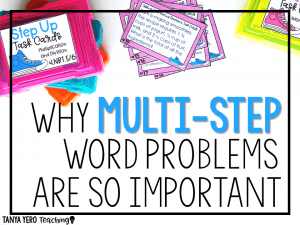A guest blog series by Stephanie George
Before I begin this post, let me stress that structure in a home school means different things to different people. But, one thing I have found to be true of even the most structured home school parent, is the understanding that life happens and sometimes there is nothing you can do about it except go with the flow. So, structure is necessary but not unbreakable or unchanging.
Chores
When you choose to home school, you realize very quickly that your home will not remain in perfect order or you will go nuts ASAP. I always aimed for a generally straight house. This meant that I taught my children to make their beds, keep their rooms fairly neat, clean the bathroom, etc. While chores are a wonderful way to share the load, what I wanted my children to understand is that they were to care for their things and take responsibility as a way to show thankfulness. I had to relax my neat freak ways and be at ease with their efforts.
Meals
Meals are a big deal in a home school day because they break up the day and give everyone benchmarks. Plan for food approximately every three hours—and definitely plan snack times for the mid-morning and mid-afternoon. Hungry kids do not pay attention at all!
Little Ones
When you have little ones, you MUST have things planned for them to do while you work with the older children. This can be coloring beside you, playing with toys, etc. I have even resorted at times to letting them watch a 30 minute show just to get the math done with the oldest one!
Subject Structure
In my home school, the first subjects we always did in the morning after breakfast were math and language. These were my non-negotiable subjects always. For most elementary children, this requires no more than an hour to hour and a half, including the time I spent teaching the lesson. Learning does not require long hours—short segments are easier to retain. Afterward, all the kids can gather to listen to a chapter book read aloud as they play with Legos or draw. Lunchtime marked the end of the elementary school day for me, and the afternoon was spent playing outside or going to the library.
As my children became older elementary and middle school, I let them choose their own schedules of what subjects they did at what point in the day. When I checked over their work, if it was not complete or not well done, I took over the schedule for a while until I felt like it was time to try for an individual schedule again. My goal was to encourage ownership of the work.
High school age students still need oversight, but not much direct instruction. I still checked over the work to ensure completion, understanding and answer questions, but most of the time an older student will come to you with questions in the process of working an assignment.
Learning Styles
There are many books on learning styles, and taking the time to discern each child’s learning style will prove to be very beneficial to your instruction. My oldest was a well-rounded learner, able to learn most any concept whether it was presented in a visual, auditory or hands on way. My second son was visual and kinesthetic (hands on), so when I taught him a concept, it was using both of those methods. For example, if we were doing math, I would explain the lesson and make sure to have counting blocks to demonstrate. He needed to bounce a ball or do something with his hands as he worked his lessons. My daughter was very auditory, so I had to make sure that we talked about her lessons and she often listened to music while she worked.
Aside the plethora of books on learning styles, there are online tests you can take with each of your children to identify the learning methods that work best. Then, you can tailor your instruction to how that child learns, and reinforce a lesson with an area that is weak. In this way, you can work to strengths and strengthen weaknesses.
Dealing with Distractions
The ringing phone, the doorbell, the doctor’s appointments—all distractions that have to be managed. I would suggest only answering the phone for an emergency. Most family members know that you will not be available during teaching hours.
We did not schedule any outside activities in the morning unless it was a doctor’s appointment that could not be helped. But, your children may work better in the afternoon to get the school work done. This is where you have to know your family and structure the day accordingly. For us, the morning was sacred for school work.
Regardless of how you choose to structure the day for your family, you will quickly learn what works for each child. This sounds harder than it really is because no one knows your child like you do, and you can usually adjust quickly to what your child needs. There are many home school parents who would love to help you, as this community goes above and beyond to be a resource to those trying to school at home!






